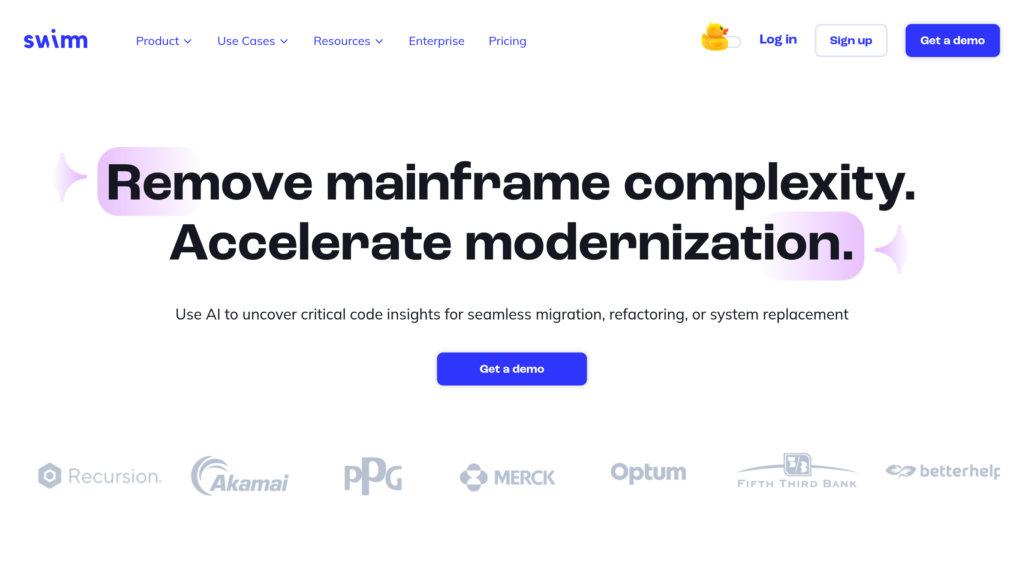Swimm
Swimm: Automatically syncs code documentation with codebase changes
Introduction
What is Swimm?
Swimm acts as an intelligent coding companion, empowering development teams to grasp intricate code structures efficiently while ensuring their documentation remains perfectly in sync with the code. Its unique engine scans complete code repositories and works within popular IDEs to deliver relevant, context-aware answers and support the ongoing maintenance of documentation. Swimm boosts productivity in onboarding, knowledge transfer, and code understanding by tethering documentation to actual code sections, offering adaptive learning sequences, and including diagrams that self-adjust with code modifications.
Key Features
* Code-Coupled Documentation: Docs are tethered to specific code sections and refresh automatically upon code updates, eliminating stale information.
* IDE Integration: Extensions for widely-used IDEs such as VS Code and JetBrains let developers tap into documentation and AI support without leaving their coding workspace.
* Generative AI Assistance: Leverage AI to produce and refine documentation, cutting down on manual work and upholding the quality of knowledge resources.
* Learning Playlists: Structure documentation into step-by-step learning tracks to simplify the onboarding process and mastering of complex projects.
* Dynamic Diagrams and Charts: Build and sustain current diagrams using Mermaid syntax with intelligent tokens that automatically mirror code alterations.
* Contextual AI Q&A: Pose questions about your code and get immediate, pertinent answers customized to your project's specific context.
Use Cases
* Onboarding New Developers: Drastically cut down the learning curve by supplying clear, current documentation directly connected to the code, minimizing uncertainty.
* Maintaining Complex Codebases: Ensure documentation stays aligned with changing systems, be it legacy monoliths or microservices, to avoid knowledge loss.
* Knowledge Sharing Across Teams: Promote collaboration and expertise transfer by embedding senior developers' insights into living, updated documents.
* Supporting Refactoring Efforts: Keep documentation accurate during code refactoring and alert team members to changes for continued coherence.
* Research to Development Handoff: Record research results and system designs to steer development teams in implementing new solutions correctly.
* Internal API Documentation: Illustrate internal API usage patterns with precise, code-anchored documentation to boost developer productivity.
